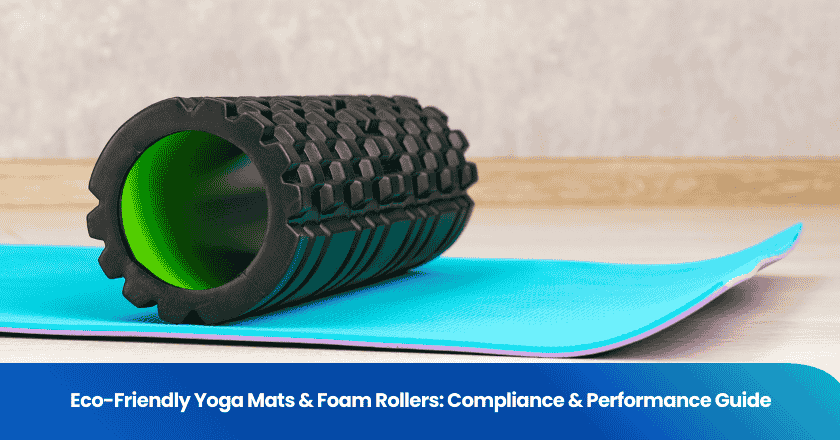
You need to understand what is quality control assurance if you want to deliver consistent results in any industry. This process means you use systematic methods to ensure products or services meet set standards and customer expectations. Quality assurance goes beyond checking the final product. You implement strong quality control measures from the start, monitoring each step to prevent defects and maintain efficiency. If you pursue a career in this field, you can choose from roles like quality assurance analyst, food safety inspector, or manufacturing quality technician.
Key Takeaways
- Quality control assurance combines quality assurance and quality control to ensure products meet standards and customer expectations.
- Implement systematic processes to prevent defects early in production, which saves costs and improves efficiency.
- Regular training and clear documentation are essential for maintaining quality standards and enhancing team performance.
- Use various quality control methods, like Six Sigma and Total Quality Management, to drive continuous improvement and customer satisfaction.
- Understanding the differences between quality assurance and quality control helps you effectively manage projects and deliver reliable results.
What is quality control assurance
Definition
You need to understand what is quality control assurance to manage product and service standards effectively. This concept combines both quality assurance and quality control into a unified system. You use quality assurance to set up proactive processes that prevent defects before they happen. You rely on quality control to inspect and test products after production, making sure they meet the required standards.
John Keenan Taylor, an environmental scientist, describes quality assurance as, "Quality assurance may be defined as those operations and procedures which are undertaken to provide measurement data of stated quality with stated probability of being right."
You can see how leading organizations define these terms in the table below:
| Term | Definition |
|---|---|
| Quality Assurance (QA) | A proactive process that involves planning, defining, and managing quality standards throughout production or service delivery, focusing on preventing defects and ensuring products meet quality criteria before reaching customers. |
| Quality Control (QC) | A reactive process that identifies defects in the final product after production, ensuring that the product meets required quality standards and specifications through inspection and testing before delivery to customers. |
When you ask what is quality control assurance, you refer to a system that integrates both approaches. You create a framework that prevents problems and catches any issues that slip through. You build confidence in your products and services by combining these methods.
Core Purpose
You use quality control assurance to achieve several essential goals in your organization. The main purpose is to ensure that every product or service meets established quality standards and satisfies customer expectations. You focus on preventing defects, not just finding them after production.
You rely on several core components to make quality control assurance effective:
| Component | Description |
|---|---|
| Introduction of QC procedures | You test and evaluate products at different stages to maintain quality standards. |
| Introduction of Standard Operating Procedures (SOPs) | You follow clear instructions to keep tasks consistent and reduce errors. |
| Managing Activities Involved in Documentation and Record-Keeping | You document every step to improve traceability and meet regulations. |
| Employee Training | You train staff to understand the importance of quality and how to maintain it. |
| Continual Internal Auditing and Enhancing Internal Processes | You audit processes regularly and make improvements to strengthen your quality assurance system. |
You achieve the core purpose of quality control assurance by:
- Establishing systematic processes to prevent defects.
- Driving continuous improvement within your organization.
- Ensuring compliance with industry standards and regulations.
- Building confidence among customers, employees, and stakeholders.
You use quality assurance to design processes that minimize the chance of errors. You use quality control to catch any defects that occur despite your best efforts. You create a robust system that delivers consistent, high-quality results.
You benefit from quality control assurance because it reduces costs related to errors, rework, and customer complaints. You build processes that are unlikely to produce defects, which improves your reputation and customer satisfaction. You make sure every product or service meets the highest standards.
How It Works
Main Processes
You manage quality control assurance by following a series of structured processes. These steps help you maintain high standards and deliver reliable results in every project. According to ISO standards, you start with raw material testing to verify identity, purity, and potency. You monitor production in real time through in-process control, ensuring critical parameters stay within acceptable ranges. You use acceptance sampling to inspect random samples from each batch, determining if the entire batch meets quality requirements. Final product testing checks for identity, potency, purity, sterility, and stability. Analytical method validation confirms the accuracy and reproducibility of your testing methods. Stability testing ensures products remain effective throughout their shelf life. You complete the process with batch release and a certificate of analysis, providing final verification before distribution.
You integrate quality assurance and quality control processes to reduce variation, eliminate waste, and enhance quality. Standardized practices and robust inspection measures help you achieve consistency and meet customer expectations.
Methods Used
You apply a variety of methods to ensure quality in every project. The table below outlines some of the most widely used approaches across industries:
| Quality Control Method | Description | Applications |
|---|---|---|
| Six Sigma | Data-driven methodology to reduce defects and variability. | Manufacturing, Healthcare |
| Statistical Process Control (SPC) | Uses statistical techniques for real-time monitoring and control. | Automotive, Electronics |
| 100% Inspection | Examines every product for quality standards. | Healthcare, Aerospace |
| Total Quality Management (TQM) | Embeds quality into every aspect of an organization. | All industries |
| Employee Training | Ensures workers understand quality standards and defect spotting. | All industries |
| Root Cause Analysis | Identifies root causes of defects or quality issues. | All industries |
| Preventive Maintenance | Keeps machines in good condition to avoid breakdowns. | Manufacturing, Automotive |
| Quality Audits | Reviews processes and products for compliance. | All industries |
| Feedback Loops | Collects customer feedback for continuous improvement. | All industries |
| Taguchi Method | Improves quality by designing robust products and processes. | Manufacturing, Engineering |
You see these methods in action across sectors. Ford uses Lean and Six Sigma to improve reliability and efficiency. Xerox applies Total Quality Management for customer satisfaction. The Ritz-Carlton focuses on employee training and real-time tracking to maintain service quality. General Electric and Motorola have achieved significant savings and improvements through Six Sigma projects.
You integrate quality assurance process and quality control by defining objectives, choosing the right solutions, training your team, and linking systems for seamless data flow. You monitor and optimize performance, using inspection and verification to maintain high standards. You rely on quality verification at every stage to ensure consistent results.
Quality Control vs. Quality Assurance
Key Differences
You need to understand the differences between quality control and quality assurance to manage your project effectively. Both play vital roles in maintaining quality, but they focus on different aspects of the process. Quality assurance vs quality control is a common topic in many industries. You use quality assurance to set up systems and procedures that prevent defects before production begins. Quality control procedures help you identify and correct defects after production.
The table below highlights the main differences:
| Aspect | Quality Assurance (QA) | Quality Control (QC) |
|---|---|---|
| Process | Proactive, prevents defects | Reactive, identifies defects |
| Timing | Before and during production | During and after production |
| Focus | Prevents defects throughout production | Identifies defects in finished products |
You plan quality assurance activities at the start of your project. You monitor processes and train your team to follow standards. Quality control occurs later, when you inspect products and use quality control procedures to catch any issues. You focus on prevention with quality assurance, while quality control emphasizes detection.
Tip: Quality assurance is a planned activity that ensures overall quality and safety. Quality control happens at the end of production for inspection.
How They Work Together
You achieve the highest level of quality when you combine quality assurance and quality control in your project. Quality assurance vs quality control is not just about choosing one over the other. You need both to create a strong quality management system. Quality assurance sets up systematic processes that reduce the number of defects. Quality control addresses any remaining issues before products reach customers.
The table below shows how these two approaches complement each other:
| Aspect | Quality Assurance (QA) | Quality Control (QC) |
|---|---|---|
| Focus | Prevents defects through systematic processes | Detects and corrects defects in the final product |
| Efficiency | Reduces the number of defects needing QC | Addresses remaining defects before delivery |
| Customer Satisfaction | Ensures products meet/exceed expectations | Identifies and corrects defects for positive experience |
| Continuous Improvement | Drives process enhancement | Provides feedback for future improvements |
You use quality assurance to drive continuous improvement and maintain high standards throughout your project. Quality control procedures provide feedback that helps you refine your processes. You build customer trust by delivering products that meet or exceed expectations. You create a cycle of improvement that strengthens your control over quality in every project.
Why Quality Matters
Benefits
You gain significant advantages when you prioritize quality control assurance in your project. Consistent quality leads to reliable products, which is crucial for customer retention and loyalty. Early detection of defects reduces labor and material costs, making your production more economical. You enhance your brand reputation by delivering products that meet expectations every time. Streamlined processes improve efficiency, helping you complete your project on schedule. Meeting industry standards keeps you compliant and avoids legal issues. You prevent defects before they arise, saving time and resources. Quality benchmarks motivate your team, boosting morale and productivity. Satisfied customers are more likely to return, increasing their lifetime value. Positive word-of-mouth advertising drives sales growth. You create a seamless user experience, which increases customer satisfaction.
| Benefit | Description |
|---|---|
| Customer Satisfaction | Consistent quality leads to reliable products, crucial for retaining customers and fostering loyalty. |
| Cost Reduction | Early detection of defects minimizes labor and material costs, making production more economical. |
| Brand Reputation | Quality control ensures consistency, enhancing customer trust and brand equity over time. |
| Increased Efficiency | Streamlined processes reduce delays and improve overall productivity. |
| Compliance and Regulation | Helps meet industry standards, avoiding legal issues and enhancing competitive advantage. |
| Defect Prevention | Identifies potential defects early in the production process, preventing issues before they arise. |
| Boosts Employee Morale | Quality benchmarks motivate employees, fostering a productive work environment. |
| Increased Customer Retention | Satisfied customers are more likely to remain loyal, increasing lifetime value. |
| Boost Sales | Consistent quality leads to positive word-of-mouth advertising, driving sales growth. |
| Enhanced User Experience | Quality assurance ensures a seamless experience for users, increasing satisfaction. |
You prevent breakdowns and catastrophic failures, saving costs and time. You boost customer confidence and preserve goodwill. You increase product safety, especially in complex projects. You save time by correcting errors early in the design stage and reduce maintenance costs, leading to higher profits.
Impact on Products and Services
You see a direct impact on your products and services when you implement quality control assurance. Quality control ensures your products meet safety, reliability, and performance criteria. You detect issues early, preventing costly recalls and maintaining trust with your customer base. Consistent quality fosters customer loyalty and gives you a competitive edge. In regulated industries, such as pharmaceuticals, strict quality standards protect public safety and help you avoid legal repercussions. In automotive projects, a single defect can trigger massive recalls and damage your reputation. You observe measurable improvements in customer satisfaction after adopting quality control assurance practices. Resolution times halve over the next quarter, and customer satisfaction levels increase by 25%. You deliver reliable products and services, which strengthens your relationship with every customer and supports long-term success for your project.
Skills and Qualifications
Technical Skills
You need a strong set of technical skills to excel in quality control assurance. Technological aptitude helps you adapt to new tools and systems quickly. You use analytical abilities to interpret data and spot trends that affect product quality. Understanding industry standards and regulations ensures you follow best practices in every quality management process. You rely on expertise in data analysis and automation tools to streamline the qa/qc process and improve efficiency. These skills allow you to identify issues early and maintain high standards throughout the quality management system.
- Technological aptitude
- Strong analytical abilities
- Understanding of industry standards and regulations
- Expertise in data analysis and automation tools
Tip: You can develop these skills by attending workshops, participating in industry conferences, and using online learning platforms. Regular training keeps your knowledge up to date and supports continuous improvement in quality assurance activities.
Education and Certifications
You benefit from a solid educational background when pursuing a career in quality control management. Most professionals hold at least a bachelor's degree, often in engineering, science, or a related field. Advanced degrees can open doors to leadership roles in quality management.
You also strengthen your qualifications with industry-recognized certifications. These credentials validate your expertise in quality management system standards and quality control management practices.
- ISO 9001 Lead Auditor Certification
- Six Sigma Certification (Yellow to Master Black Belt)
- Certified Quality Manager (CQM)
- Certified Quality Engineer (CQE)
- Certified Quality Auditor (CQA)
- ISO 13485, IATF 16949, AS9100, ISO/IEC 17025
Personal Qualities
You need more than technical expertise to succeed in quality control assurance. Attention to detail helps you catch small mistakes that could impact product safety. Clear communication allows you to share findings with your team and management. Problem-solving skills enable you to identify root causes and suggest practical solutions. Adaptability keeps you effective as manufacturing practices and technologies evolve. Teamwork lets you collaborate across departments to maintain quality standards.
- Attention to detail
- Clear communication
- Problem-solving skills
- Adaptability
- Teamwork
Note: You can develop these qualities by setting professional development goals, joining mentoring programs, and participating in knowledge-sharing sessions. These strategies help you grow and contribute to a successful quality management system.
Quality control assurance drives success in modern industries. You reduce costs, improve delivery times, and boost customer satisfaction by validating processes and minimizing defects. You empower your team through training and recognition, fostering a culture of quality. If you want to advance your expertise, define objectives, draft SOPs, and pursue reputable courses such as online QA programs or industry certifications. Embrace automation and AI trends to stay ahead in your field. Your commitment to quality shapes reliable products and services for the future.
FAQ
What is the main difference between quality control and quality assurance?
Quality control focuses on detecting defects in finished products. Quality assurance sets up processes to prevent defects before production starts. You use both to maintain high standards and deliver reliable results.
Why should you implement quality control assurance in your organization?
You improve product reliability, reduce costs, and increase customer satisfaction. Quality control assurance helps you meet industry standards and avoid legal issues. You build trust with customers and stakeholders.
Which industries use quality control assurance?
You find quality control assurance in manufacturing, healthcare, food production, automotive, and technology. Any industry that values consistent quality and safety benefits from these practices.
What skills help you succeed in quality control assurance?
You need strong analytical skills, attention to detail, and clear communication. Problem-solving and adaptability help you address challenges. Teamwork supports collaboration across departments.
How can you start a career in quality control assurance?
You pursue a relevant degree, such as engineering or science. You earn certifications like Six Sigma or ISO 9001. You gain experience through internships or entry-level roles in quality management.
Grow your business with TradeAider Service
Click the button below to directly enter the TradeAider Service System. The simple steps from booking and payment to receiving reports are easy to operate.



